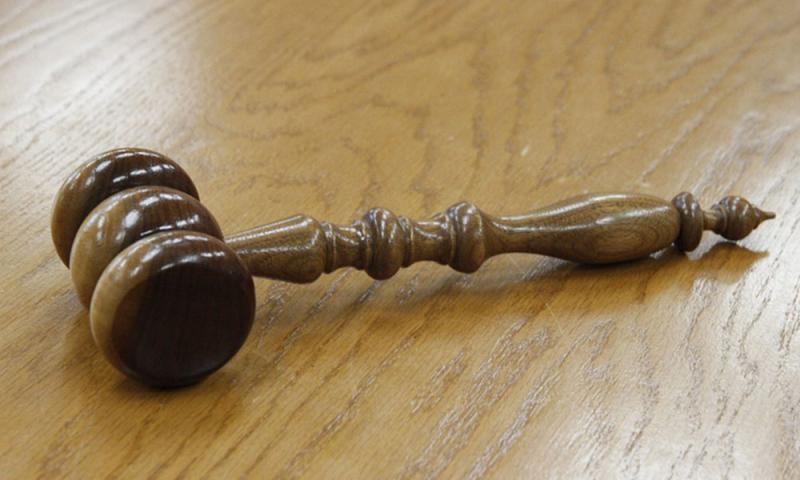

GK Ganesan
Published: Jun 10, 2025 4:30 PM
Updated: 6:30 PM
COMMENT | We start from the middle of the saga. Because former lord president of the Supreme Court Salleh Abas fought for the independence of the judiciary, he was tried. You must ask who the tribunal members were: you would be surprised.
Five judges of the Supreme Court ordered a stay of the tribunal. So his lawyers came to deliver it at Parliament, where the tribunal sat. They were barred from the very halls where democracy breathes.
When the court was informed, the judges requested the police to effect the delivery of the order. Grudgingly, the gates opened.
In the end, Salleh was removed, as were the five judges. Their crime? Upholding the rule of law.
Thus unfolded Malaysia’s constitutional tragedy - a darkness so profound, it eclipsed the very soul of judicial independence.
The spark that lit the fire
The trouble began with politicians, as it always does.
In 1987, Umno - Malaysia’s ruling party - split. Dr Mahathir Mohamad led “Team A” against Tengku Razaleigh Hamzah’s “Team B”. It was a leadership contest so close, it could have been decided by the toss of a coin. Mahathir won by the narrowest of margins. The margin of victory was razor-thin, at just 2.9 percent, or 761 to 718 votes.
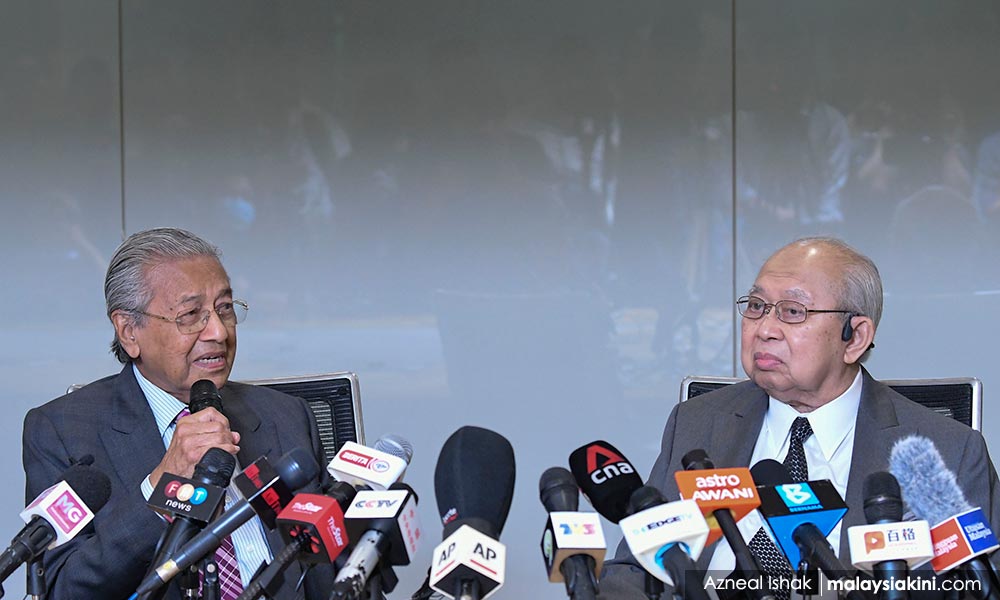
Former prime minister Dr Mahathir Mohahad (left) and former finance minister Tengku Razaleigh Hamzah
But victory tasted bitter, for Razaleigh’s supporters dragged the party to court. A dozen of them filed a suit at the High Court - one pulled out. The 11 struggled on.
They complained that the election had been rigged: as indeed it was.
They showed proof that 78 of the 1,479 delegates were illegal: these “delegates” were from unregistered branches.
Justice Harun Hashim agreed. He found in favour of the applicants. Had the court declared the votes of the illegitimate 74 delegates void, and had it ordered a re-election, it was clear what the eventual result would have been. Had the court stopped there, it would have been normal.
But the court did something rather odd.
On Feb 4, 1988, Harun delivered a bombshell: “Umno was illegal.”
The ruling party was gone, just like that.
For his part, Mahathir formed the “New” United Malays National Organisation: “Umno Baru.” The acolytes of the new party scattered across the hinterland, assuring the faithful that “nothing had changed”.
At hastily convened Umno Baru gatherings, a large “Umno Baru” banner would hang behind the evening’s speaker. At the opportune moment, a can of spray paint would be used to black out the word “Baru”.
How many of you can recall how PAS, then in the opposition, would heckle the “new” Umno, calling it “Umno cat” (painted Umno).
Mahathir had the assets of the old party transferred to the new. Predictably, he only accepted members loyal to him.
Using law to kill Law
The law had been spoken to power, and that could not be tolerated. The judiciary might have spoken. But Power did not approve.
Mahathir remained prime minister through parliamentary support. But the humiliation stung Power, like salt cast into an open wound.
But victory tasted bitter, for Razaleigh’s supporters dragged the party to court. A dozen of them filed a suit at the High Court - one pulled out. The 11 struggled on.
They complained that the election had been rigged: as indeed it was.
They showed proof that 78 of the 1,479 delegates were illegal: these “delegates” were from unregistered branches.
Justice Harun Hashim agreed. He found in favour of the applicants. Had the court declared the votes of the illegitimate 74 delegates void, and had it ordered a re-election, it was clear what the eventual result would have been. Had the court stopped there, it would have been normal.
But the court did something rather odd.
On Feb 4, 1988, Harun delivered a bombshell: “Umno was illegal.”
The ruling party was gone, just like that.
For his part, Mahathir formed the “New” United Malays National Organisation: “Umno Baru.” The acolytes of the new party scattered across the hinterland, assuring the faithful that “nothing had changed”.
At hastily convened Umno Baru gatherings, a large “Umno Baru” banner would hang behind the evening’s speaker. At the opportune moment, a can of spray paint would be used to black out the word “Baru”.
How many of you can recall how PAS, then in the opposition, would heckle the “new” Umno, calling it “Umno cat” (painted Umno).
Mahathir had the assets of the old party transferred to the new. Predictably, he only accepted members loyal to him.
Using law to kill Law
The law had been spoken to power, and that could not be tolerated. The judiciary might have spoken. But Power did not approve.
Mahathir remained prime minister through parliamentary support. But the humiliation stung Power, like salt cast into an open wound.

Malaysian judges
Thus began Mahathir’s relentless and open attacks against the judiciary. He berated the judges for judicial verdicts that dared displease him. Again and again, he lashed out against the judges.
Eventually, Mahathir moved against the judiciary: he tried to use law to kill Law (for the record, he failed).
On March 17, 1988, his government tabled the Constitution (Amendment) Bill 1988.
Hidden within its clauses lay a constitutional time bomb: Article 121(1) would no longer vest “judicial power” in the courts.
Instead, courts would have only “such jurisdiction and powers as may be conferred by federal law.”
To the layperson, it meant Parliament could now control how the judiciary did its work. And who controlled Parliament? That meant the sacred principle of the separation of powers was paralysed or, at worst, dismantled.
The change seemed subtle - a word here, a phrase there. But constitutional lawyers knew better.
Thus, the judiciary had been reduced from constitutional guardian to parliamentary servant.
Former lord president, His Majesty Sultan Azlan Shah, warned it would strip courts of their inherent jurisdiction. His warnings fell on deaf ears.
Parliament passed the bill with unseemly haste.
The first constitutional salvo against judicial independence had been fired.
A letter that shook the palace
Salleh watched these developments with growing alarm. On March 26, 1988, he convened an unprecedented meeting of 20 judges.
The judges jointly drafted a confidential letter to the monarch, the Yang di-Pertuan Agong, expressing their “disappointment” with the prime minister’s public vilification of the judiciary.
The letter was respectful, even deferential. Salleh spoke for every judge in the land, telling the King that Mahathir’s attacks had wounded the institution they served.
A copy went to each state ruler - insurance, perhaps, that the message would not be buried.
The letter would become Salleh’s death warrant.
On May 27, 1988, Mahathir struck back. Using Article 125(3) of the Constitution, he initiated removal proceedings against Salleh for alleged “misconduct”.
Thus began Mahathir’s relentless and open attacks against the judiciary. He berated the judges for judicial verdicts that dared displease him. Again and again, he lashed out against the judges.
Eventually, Mahathir moved against the judiciary: he tried to use law to kill Law (for the record, he failed).
On March 17, 1988, his government tabled the Constitution (Amendment) Bill 1988.
Hidden within its clauses lay a constitutional time bomb: Article 121(1) would no longer vest “judicial power” in the courts.
Instead, courts would have only “such jurisdiction and powers as may be conferred by federal law.”
To the layperson, it meant Parliament could now control how the judiciary did its work. And who controlled Parliament? That meant the sacred principle of the separation of powers was paralysed or, at worst, dismantled.
The change seemed subtle - a word here, a phrase there. But constitutional lawyers knew better.
Thus, the judiciary had been reduced from constitutional guardian to parliamentary servant.
Former lord president, His Majesty Sultan Azlan Shah, warned it would strip courts of their inherent jurisdiction. His warnings fell on deaf ears.
Parliament passed the bill with unseemly haste.
The first constitutional salvo against judicial independence had been fired.
A letter that shook the palace
Salleh watched these developments with growing alarm. On March 26, 1988, he convened an unprecedented meeting of 20 judges.
The judges jointly drafted a confidential letter to the monarch, the Yang di-Pertuan Agong, expressing their “disappointment” with the prime minister’s public vilification of the judiciary.
The letter was respectful, even deferential. Salleh spoke for every judge in the land, telling the King that Mahathir’s attacks had wounded the institution they served.
A copy went to each state ruler - insurance, perhaps, that the message would not be buried.
The letter would become Salleh’s death warrant.
On May 27, 1988, Mahathir struck back. Using Article 125(3) of the Constitution, he initiated removal proceedings against Salleh for alleged “misconduct”.
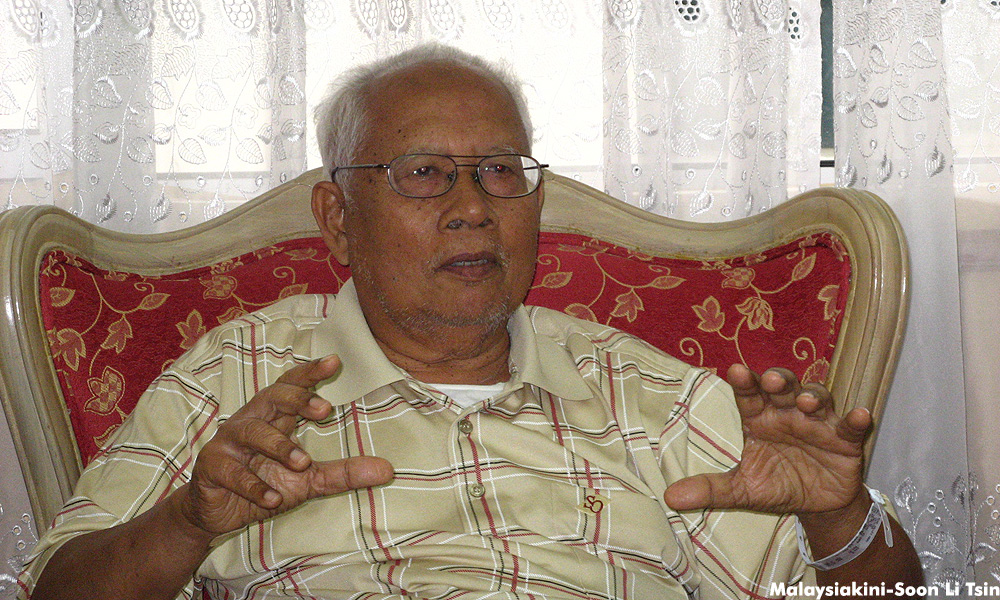
Former lord president of the Supreme Court Salleh Abas
The tribunal was chaired by then chief justice Hamid Omar - the very man who would inherit Salleh’s position if the lord president fell. The conflict of interest was breathtaking, yet no one in power seemed to care.
Salleh, sensing the noose tightening, tried desperate measures. On May 28, he wrote to Mahathir offering to retire immediately, taking all 96 days of leave due to him.
Mahathir’s reply was coldly formal: “Appropriate action would be taken according to the Constitution.” There would be no graceful exit.
Even Malaysia’s Conference of Rulers recognised the constitutional catastrophe unfolding. During the Conference of Rulers, they offered Salleh a lifeline: “Apologise to the Yang di-Pertuan Agong, and his suspension would be lifted.”
Desperate, Salleh agreed.
On June 27, 1988, he travelled to Johor Bahru to meet the King. The royal mediation was compromised before it began. When he arrived, the attorney general and chief secretary to the government were already there.
The Yang di-Pertuan Agong informed Salleh that the tribunal would proceed. There were “other allegations, beyond the letter”.
Locked out of Parliament
The tribunal commenced on June 29, 1988. In desperation, Salleh’s lawyers sought an injunction from the High Court. When that failed, they turned to the Supreme Court.
On July 2, five Supreme Court judges - Wan Suleiman, Eusoffe Abdoolcader, Wan Hamzah, Azmi Kamaruddin, and George Seah - granted an interim stay, restraining the tribunal from submitting its report.
What happened next reads like constitutional theatre. Salleh’s solicitors rushed to Parliament to serve the court order on the tribunal chairperson. But the gates were locked - literally locked against justice.
The tribunal was chaired by then chief justice Hamid Omar - the very man who would inherit Salleh’s position if the lord president fell. The conflict of interest was breathtaking, yet no one in power seemed to care.
Salleh, sensing the noose tightening, tried desperate measures. On May 28, he wrote to Mahathir offering to retire immediately, taking all 96 days of leave due to him.
Mahathir’s reply was coldly formal: “Appropriate action would be taken according to the Constitution.” There would be no graceful exit.
Even Malaysia’s Conference of Rulers recognised the constitutional catastrophe unfolding. During the Conference of Rulers, they offered Salleh a lifeline: “Apologise to the Yang di-Pertuan Agong, and his suspension would be lifted.”
Desperate, Salleh agreed.
On June 27, 1988, he travelled to Johor Bahru to meet the King. The royal mediation was compromised before it began. When he arrived, the attorney general and chief secretary to the government were already there.
The Yang di-Pertuan Agong informed Salleh that the tribunal would proceed. There were “other allegations, beyond the letter”.
Locked out of Parliament
The tribunal commenced on June 29, 1988. In desperation, Salleh’s lawyers sought an injunction from the High Court. When that failed, they turned to the Supreme Court.
On July 2, five Supreme Court judges - Wan Suleiman, Eusoffe Abdoolcader, Wan Hamzah, Azmi Kamaruddin, and George Seah - granted an interim stay, restraining the tribunal from submitting its report.
What happened next reads like constitutional theatre. Salleh’s solicitors rushed to Parliament to serve the court order on the tribunal chairperson. But the gates were locked - literally locked against justice.
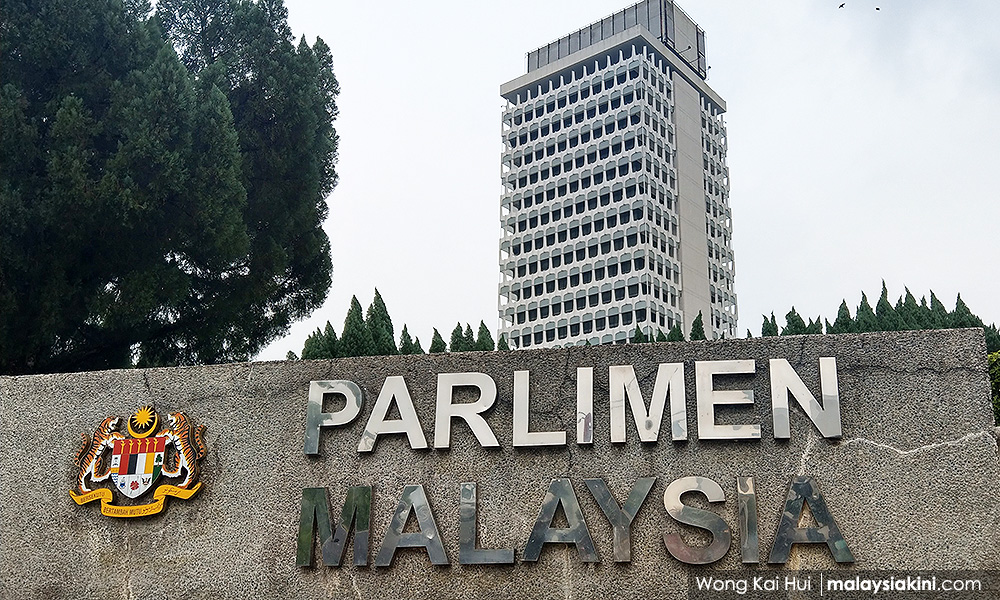
This obstacle was conveyed to Wan Suleiman, who, after consulting with Abdoolcader, rang up the deputy inspector-general of police.
The deputy IGP then directed the police constable stationed at the gate of Parliament House to open the gate, allowing passage for Salleh’s solicitors to effect service of the court order on the chairperson of the tribunal. This was duly effected that same Saturday morning.
The purge
The government’s response was immediate and brutal. On July 6, 1988, all five Supreme Court judges were suspended.
The Supreme Court - Malaysia’s highest judicial authority - was effectively neutered and lay in paralysis.
No judge remained to challenge the tribunal’s legitimacy.
With the coast clear, the tribunal delivered its verdict on July 7. Salleh must go, they recommended, for “misbehaviour”.
The Yang di-Pertuan Agong ratified the decision on Aug 8, 1988. After 22 years of distinguished service, Salleh was cast into the constitutional wilderness.
A second tribunal followed in September, targeting the suspended judges. Only Wan Suleiman and George Seah refused to apologise for upholding judicial independence.
Both were dismissed.
The others, chastened and humbled, were eventually reinstated.
The long shadow of 1988
The crisis left scars that have never fully healed. As retired Court of Appeal judge Hishamudin Yunus observed 27 years later, “The negative public perception against the judiciary is still there.”
Former lord president Suffian Hashim predicted it would take a generation for the judiciary to recover.
More than three decades later, many question whether recovery is complete.
Chief Justice Tengku Maimun Tuan Mat, speaking in 2022, called 1988 “the darkest chapter in the history of the Malaysian judiciary”.
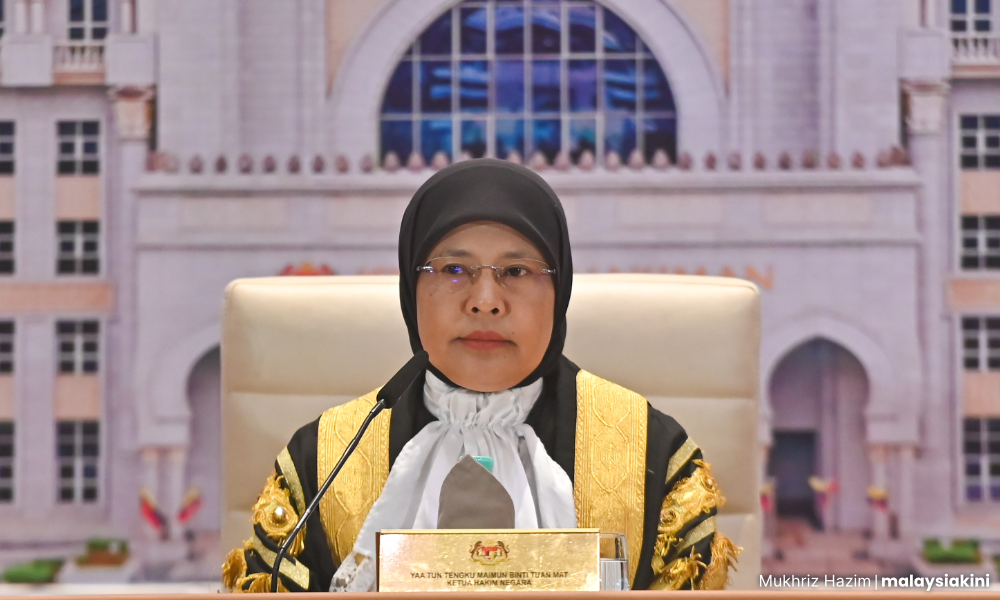
Chief Justice Tengku Maimun Tuan Mat
Yet, she drew from it a defiant lesson: judges must remain “faithful to the Federal Constitution and be resolute in upholding the rule of law.”
But the late Johor ruler’s son, Tunku Abdul Majid Idris Iskandar, has countered that Mahathir used his father to achieve his political ends.
The truth, like justice itself, remains elusive.
What cannot be disputed is this: 1988 marked the moment when Malaysia’s judiciary bent its knee to executive power.
The constitutional amendment, the tribunal proceedings, the mass suspension of judges - all spoke to a single, chilling reality:
In the contest between law and power, power had won, then.
Today, Malaysia’s courts operate under the shadow of 1988.
The amended Article 121(1) remains in the Constitution, a constant reminder that judicial power flows from Parliament’s grace, not constitutional right.
In 2008, the government offered ex-gratia payments to Salleh and the affected judges - compensation, perhaps, but not vindication.
Salleh himself never received the closure he sought. As Maimun revealed, he had repeatedly spoken of wanting to address the Bench one final time, to bid a proper farewell to the institution he had served.
That moment never came.
He passed away in January 2021, carrying with him the unfulfilled hope of constitutional redemption.
Uncomfortable questions, no easy answers
The 1988 judicial crisis poses some uncomfortable questions:
Can a judiciary truly be independent when its very existence depends on the permission of Parliament?
What happens when the guardians of justice become servants of power?
And in a nation built on constitutional principles, who watches the watchers when the watchers themselves fall silent?
These questions have no easy answers. Yet in asking them, we honour the memory of those who stood firm when the constitutional storm raged - and perhaps, in time, we, and the judiciary, may yet find our way back into the light.
Even now, the shadows of the 1988 crisis dance through the courts’ marble corridors.
In chambers where robes once rustled with dignity, they whisper their terrible secrets.
History’s bitter teachers - Hitler’s jackboots, Mussolini’s theatrical rage - still offer us their harsh lessons. The uniforms fade. The symbols change.
Yet evil endures, shape-shifting through the ages, like smoke through stone.
And so you must stand sentinel.
We must raise our voices when Darkness stirs.
For in every generation, Tyranny tests the Gates of Freedom.
The price of justice is eternal vigilance.
Yet, she drew from it a defiant lesson: judges must remain “faithful to the Federal Constitution and be resolute in upholding the rule of law.”
But the late Johor ruler’s son, Tunku Abdul Majid Idris Iskandar, has countered that Mahathir used his father to achieve his political ends.
The truth, like justice itself, remains elusive.
What cannot be disputed is this: 1988 marked the moment when Malaysia’s judiciary bent its knee to executive power.
The constitutional amendment, the tribunal proceedings, the mass suspension of judges - all spoke to a single, chilling reality:
In the contest between law and power, power had won, then.
Today, Malaysia’s courts operate under the shadow of 1988.
The amended Article 121(1) remains in the Constitution, a constant reminder that judicial power flows from Parliament’s grace, not constitutional right.
In 2008, the government offered ex-gratia payments to Salleh and the affected judges - compensation, perhaps, but not vindication.
Salleh himself never received the closure he sought. As Maimun revealed, he had repeatedly spoken of wanting to address the Bench one final time, to bid a proper farewell to the institution he had served.
That moment never came.
He passed away in January 2021, carrying with him the unfulfilled hope of constitutional redemption.
Uncomfortable questions, no easy answers
The 1988 judicial crisis poses some uncomfortable questions:
Can a judiciary truly be independent when its very existence depends on the permission of Parliament?
What happens when the guardians of justice become servants of power?
And in a nation built on constitutional principles, who watches the watchers when the watchers themselves fall silent?
These questions have no easy answers. Yet in asking them, we honour the memory of those who stood firm when the constitutional storm raged - and perhaps, in time, we, and the judiciary, may yet find our way back into the light.
Even now, the shadows of the 1988 crisis dance through the courts’ marble corridors.
In chambers where robes once rustled with dignity, they whisper their terrible secrets.
History’s bitter teachers - Hitler’s jackboots, Mussolini’s theatrical rage - still offer us their harsh lessons. The uniforms fade. The symbols change.
Yet evil endures, shape-shifting through the ages, like smoke through stone.
And so you must stand sentinel.
We must raise our voices when Darkness stirs.
For in every generation, Tyranny tests the Gates of Freedom.
The price of justice is eternal vigilance.
GK GANESAN is a lawyer and an international commercial arbitrator.
The author thanks UK Menon, G Naidu, KN Geetha, TP Vaani, JN Lheela, and Lydia Jaynthi.
Malaysiakini has obtained permission to republish this article, which first appeared here.
No comments:
Post a Comment